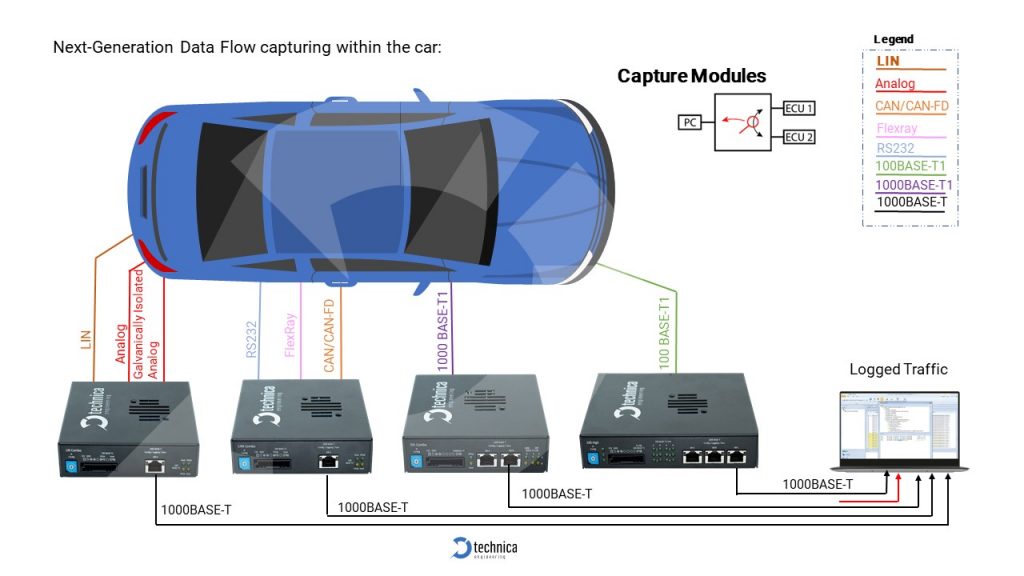A free webinar on the datalogging challenges implicit in developing AVs was hosted by Autonomous Vehicle International and Danial Popalzai, technical sales engineer, Technica Engineering, last week (November 10). If you missed it, this is your chance to sign up for free to watch – simply click here and fill out the registration form to access a live recording.
As Popalzai explains during the webinar, in the era of autonomous driving, one key challenge for test and validation is the reliable capture of relevant in-vehicle traffic data from different communication technologies. Conventional CANbuses, as well as CAN FD, LIN, RS-232, analog and in some cases FlexRay, still play an important role in the function of modern cars. Lately, automotive Ethernet communication segments (100BASE-T1, 1000BASE-T1 and additional speed grades coming soon) have increasingly become an essential part of a vehicle’s onboard network.
The challenges that arise during test and validation include the reliable capture of AVB/TSN traffic without interfering with the network timing, as well as simultaneous capture of legacy IVN and automotive Ethernet. Adding to the challenge is the need for diagnostics protocols to be sent to the DUTs during runtime as well as the limitations on newer standards regarding modifications to the cable harness to attach measurement tools.
Log on now to learn how Technica Engineering’s vast experience in providing testing tools for automotive Ethernet could help. Since the first implementation of BroadR-Reach in 2008 for BMW and Broadcom, the company has pioneered automotive Ethernet testing, tackling the challenges of test and validation of modern car E/E systems.
 “One must wonder, when we have so many existing technologies in a vehicle, why do we opt for something completely different as a point-to-point Ethernet technology?” asks Popalzai (pictured, right), during the hour-long webinar. “Why was it needed?” Discover the answer by registering here.
“One must wonder, when we have so many existing technologies in a vehicle, why do we opt for something completely different as a point-to-point Ethernet technology?” asks Popalzai (pictured, right), during the hour-long webinar. “Why was it needed?” Discover the answer by registering here.


